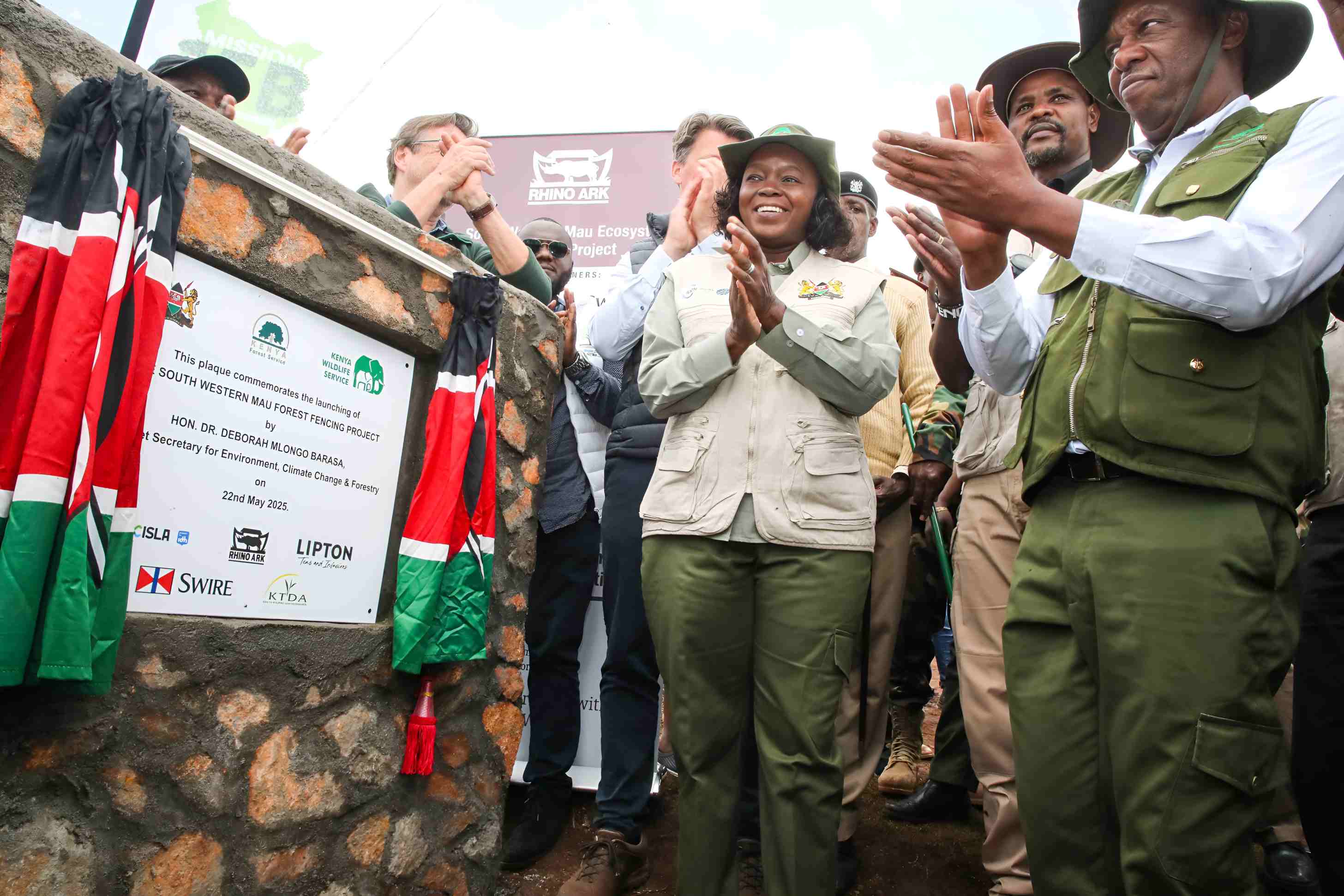Fencing project unveiled in South West Mau Forest

The initiative will cover the southern Mau region, including Trans Mara, Maasai Mau, South West Mau, and Olposimoru forests.
A project to fence off part of the Mau Forest complex, Kenya’s largest water tower, has officially begun.
The initial phase, with a budget of Sh50 million, will see the construction of a 30-kilometre fence around Ndoinet Forest in South West Mau.
This barrier is designed to separate human settlements from the forest area, helping to protect the vital ecosystem.
Christian Lambrechts, director of Rhino Ark, revealed that the entire fencing project is planned to span over 400 kilometres.
The initiative will cover the southern Mau region, including Trans Mara, Maasai Mau, South West Mau, and Olposimoru forests.
"The project has been in development for the past eight years. The first phase will concentrate on fencing 30 kilometres along the north-eastern boundary of South West Mau," Lambrechts said.
The South West Mau Forest is the largest of the 22 sections within the Mau Forest Complex, spanning 60,000 hectares of indigenous montane forest.
The forest is a crucial water catchment area, feeding several rivers such as the Sondu Miriu, which flows into Lake Victoria and eventually joins the Nile River on its way to the Mediterranean Sea.
As a protected reserve, the Mau Forest Complex covers parts of Nakuru, Bomet, and Kericho counties.
"Mau is a vital water tower, not only for Kenya but for the entire region, supporting transboundary lakes and rivers relied upon by many communities," Lambrechts emphasized.
Despite its importance, the Mau Forest Complex has faced persistent threats such as encroachment, deforestation, overgrazing, logging, and charcoal production over the years.
Cabinet Secretary for Environment, Climate, and Forestry Deborah Barasa highlighted that beyond halting further degradation, the fencing project will also help minimize human-wildlife conflicts in the area.
"The Mau Forest is a biodiversity hotspot that must be protected at all costs. It holds significant cultural value for local communities and plays a crucial ecological role in the region. The fence will serve as a deterrent against illegal activities," Dr. Barasa stated.
She also noted that the ongoing boundary demarcation in Eastern Mau is aimed at addressing long-standing disputes caused by unclear boundaries within the water tower.
"With clearly defined boundaries, we can more effectively separate settlements from forests, facilitating easier conservation efforts," she added.
Local resident Joseph Chepkwony welcomed the fencing project, saying it will help the community safeguard the forest from further damage.
“This forest is vital for maintaining the flow of our rivers, but we have seen a lot of destruction over the years,” he said.
So far, 1,500 hectares of degraded forest land in South West Mau that had been encroached upon have been replanted.
